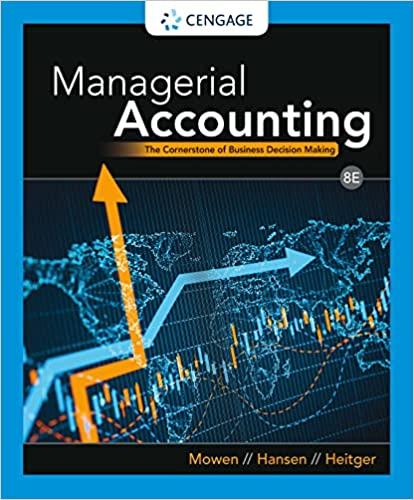Question
To what extent do you agree with these discussions statements. Respond and add examples if possible 1. Flexible resources are short-term resources that do not
To what extent do you agree with these discussions statements. Respond and add examples if possible
1. Flexible resources are short-term resources that do not require much-advanced planning. These resources can also be adjusted or changed quickly if demand or capacity estimates are not meeting actual demand or capacity. Capacity resources are medium and long-term resources and have to be planned for based on estimated sales or usage. Since capacity resources need to be planned out in advance they are hard to adjust if sales or usage are not meeting the expectation or if there is a sudden change required. Some capacity resources cannot be changed if actual demand is not meeting the planned expected demand. This inflexibility can lead to lost sales if actual demand is exceeding expected demand due to possible shortages in capacity resources. This could also lead to a loss or negatively affect the bottom line if actual demand is less than expected because now there is a surplus of capacity resources that the cost of cannot be recouped easily.
2. Flexible resources are resources that vary in quantity and cost based on the volume needed for production. Whereas capacity related resources are those that become a fixed value and not easily altered. One example I considered is when the company I work for runs monthly billing. The number of envelopes and paper needed to vary month to month depending on the billing cycle. I work in crop insurance and the first (major) billing of the year is July 1. We need a much greater volume of supplies in that month than we do in March when policies are ended. That would be a flexible resource. However, the lease on the machinery needed to fold, insert, and post the envelopes remain the same month to month because that equipment is retained year round.
3. Flexible resources are short term resources that are used to completion when used to produce a product or provide a service whereas capacity-related resources are those that are used to convert flexible resource into something of value but are not used to completion. Capacity-related resources are either intermediate-term or long-term where intermediate-term would be a term of about a year or less of use and long-term would be greater than a year of use. For example, if a factory worker uses their time to pack a box and ship it to the customer then the workers time would capacity-related, and the factory would be capacity-related where the package and its contents would be flexible resources. Even though the workers time and the time of the factory have been used to provide a good to a customer the same worker and same factory can provide that resource again in order to produce another good. The good itself though is gone once it is sold, if the factory decides to produce an identical good with the same workers and factory the second good is physically distinct from the first good and therefore the materials the first good was made of were used to completion. Another example would be a person running a window washing business where the person, the squeegee and the bucket are used to provide a service, but the same three items can be used again to provide the service again and would be considered capacity-related resources. On the other hand, the soap and the water will be used to completion during the first service and the second service provided will need to use new water and soap so they would be considered flexible resources.
4. Flexible resources are those that vary with the activity level of the firm or organization or can be defined as a company being able to make necessary changes to swiftly adapt to different circumstances. For example, companies that use machinery to transform raw materials into products utilize lean manufacturing, which is a flexible resource. Lean manufacturing maximizes throughput with fewer resources and accomplishes it in less time and with less effort than other methods. It often requires flexible tools that can balance material flow and keep up with the pace of production. Flexible manufacturing enables companies to react to changes (Ashton, 2021). For example, during the COVID-19 pandemic, manufacturing companies had to rely on flexible resources to continue to produce raw materials into products with delays in receiving parts and other raw materials. Jobs all over the world had to find creative ways to maintain its customers, so companies utilized remote technology to allow employees to work from home. Whereas capacity-related resources do not change with the activity level. In manufacturing, an example of capacity-related resources would be machinery, people, and tools. Companies use this resource by comparing future resource utilization of a projects resource against available capacity to do work. As well as operation on a job. A company will need to determine how many hours of machinery managing it will take to produce product, how many people are needed to ensure productivity, and the tools needed to produce product.
Step by Step Solution
There are 3 Steps involved in it
Step: 1

Get Instant Access to Expert-Tailored Solutions
See step-by-step solutions with expert insights and AI powered tools for academic success
Step: 2

Step: 3

Ace Your Homework with AI
Get the answers you need in no time with our AI-driven, step-by-step assistance
Get Started


